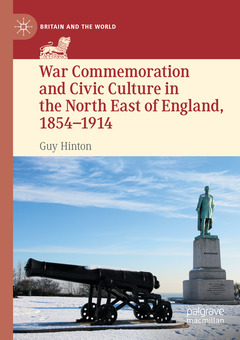Description
War Commemoration and Civic Culture in the North East of England, 1854–1914, 1st ed. 2021
Britain and the World Series
Author: Hinton Guy
Language: English
Subject for War Commemoration and Civic Culture in the North East of...:
Keywords
War memorial; Monumentalism; Civic society; War monument; Civic culture; Crimean War; Boer War; Indian Rebellion; The Small Wars; Political history; Social history; Social change; Imperial expansion; Memory; National identity; Trophy memorial; Conflict; Commemoration; Patriotism; Victorian era
Approximative price 126.59 €
In Print (Delivery period: 15 days).
Add to cartPublication date: 09-2022
291 p. · 14.8x21 cm · Paperback
Approximative price 126.59 €
In Print (Delivery period: 15 days).
Add to cartPublication date: 09-2021
291 p. · 14.8x21 cm · Hardback
Description
/li>Contents
/li>Biography
/li>Comment
/li>
This book examines a diverse set of civic war memorials in North East England commemorating three clusters of conflicts: the Crimean War and Indian Rebellion in the 1850s; the ?small wars? of the 1880s; and the Boer War from 1899 to 1902. Encompassing a protracted timeframe and embracing disparate social, political and cultural contexts, it analyses how and why war memorials and commemorative practices changed during this key period of social transition and imperial expansion. In assessing the motivations of the memorial organisers and the narratives they sought to convey, the author argues that developments in war commemoration were primarily influenced by ? and reflected ? broader socio-economic and political transformations occurring in nineteenth-century and early-twentieth century Britain.
Guy Hinton completed his PhD at Newcastle University, where he also taught British history and concepts of historiographical research. He has written on popular reactions to the Boer War and spoken at numerous academic conferences and to the wider community. Before returning to academia, Guy worked for fifteen years in the cultural sector.
Provides an innovative examination of the motivations behind nineteenth century military and imperial monuments, drawing on wider social and political contexts
Presents an interdisciplinary approach, appealing to researchers in multiple fields, such as memory studies, the history of war and conflict, and nationalism and identity
Demonstrates the crucial influence of civic pride and municipal culture on the creation of imperial war monuments, and how these interacted with wider notions of national identity
These books may interest you

Remembering Asia's World War Two 160.25 €



